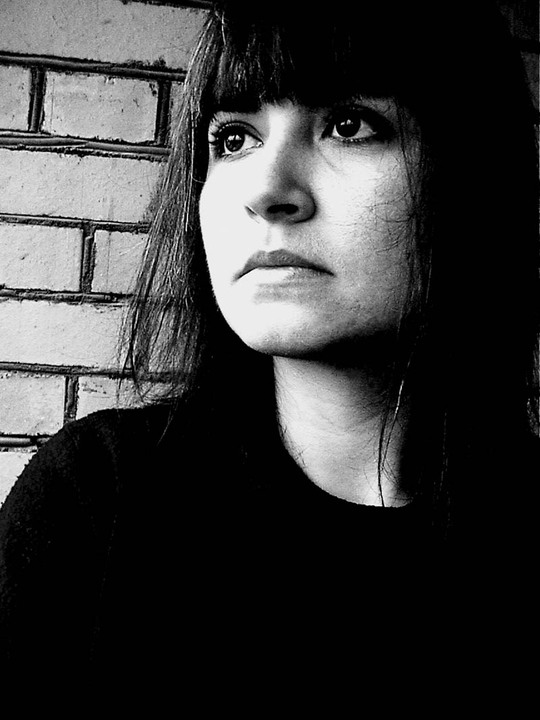Conferences and debates
Index / Activities / Conferences and debates / A conversation with Palestinian artist Larissa Sansour
A conversation with Palestinian artist Larissa Sansour
March 02, 20167:00 p.m.
MADRID
Casa Árabe Auditorium (c/ Alcalá, 62)
7:00 p.m.
Free entry until the event’s capacity is reached.
In English, with simultaneous translation
On the occasion of the presentation of her latest film, In the Future They Ate From the Finest Porcelain (2016).
The event will include attendance by the artist herself, who will be accompanied by Piedad Solans, a doctor of Art History, as well as a researcher and exhibition curator, and Miguel-Anxo Murado, a writer and journalist who was formerly a Middle East correspondent for the newspaper El Mundo.
Presented and moderated by Nuria Medina, Casa Árabe’s Culture Coordinator
The work of artist Larissa Sansour, who was born in Jerusalem but now resides in London, is characterized by a fusion of elements from pop culture and topics related with Palestinian identity. In response to the Israeli-Palestinian conflict and all the failed attempts to achieve a lasting peace, her photographs and videos recreate imaginary spaces in which the Palestinian people could possibly settle. In her work “A Space Exodus” (2009), the artist reinvented herself as a “Palestinaut” who travels to the moon to stake a claim on the stateless space there for her own country. In the series “Nation Estate” (2012), Sansour conceives of a new home for her people inside an immense skyscraper. In each photograph, she portrays a different apartment in the building, with the artist appearing in each of them. The series begins in the main entrance hall, passes through the Dead Sea and ends up in Gaza, all within the space of a single building.
The last work by the artist, a film titled “In the Future, They Ate From The Finest Porcelain” (2016), is a reflection on the archeology of the future and invention of the past. It will be presented in the month of March at the Sabrina Amrani gallery in Madrid (from March 3 to April 9).
During the session at Casa Árabe, an excerpt from the film will be shown.
Larissa Sansour was born in East Jerusalem and studied Fine Arts in London, New York and Copenhagen. She currently lives and works in the United Kingdom. Her work is multidisciplinary, and each piece uses different languages, such as video, photography, the installation, the book or the Internet. Sansour’s work has been majorly influenced by the political events of the modern day, and in it we repeatedly find reflections about the dichotomy between the meaning of belonging to a place and being removed from that place. In her work, the artist often makes use of fiction to deal with today’s political realities. The way she approaches nature and the complexity of life in Palestine and the Middle East, as well as her humor and the use she commonly makes of visual forms which are normally associated with the entertainment world (superheroes from comics, “spaghetti westerns” or horror movies) contrast with the serious side one would expect when viewing works by artists originating from this region.
Her recent individual exhibitions include those at the Galerie Anne de Villepoix in Paris, the Fotografisk Center in Copenhagen, Kulturhuset in Stockholm, Depo in Istanbul and Jack the Pelican in New York. Her work has been displayed at the biennials of Istanbul, Busan and Liverpool. She has had shows at institutions such as the Tate Modern (London), Brooklyn Museum (New York), Centre Pompidou (Paris), LOOP (Seoul), Al Hoash (Jerusalem), Museo Nacional Centro de Arte Reina Sofía (Madrid), Louisiana Museum of Contemporary Art, (Denmark), Haus der Kulturen der Welt (Berlin) and MOCA (Hiroshima). www.larissasansour.com
Piedad Solans holds a PhD in Art History and is a researcher and exhibition curator. She is the author of works such as Accionismo vienés (Viennese Actionism) and Arte y resistencia (Art and Resistance) and essays including Mitologías posmodernas (Post-modern Mythologies), Lo sublime posmoderno (The Post-modern Sublime), Mitos y delitos de las nuevas tecnologías (Myths and Crimes of New Technologies), Estética, nihilismo y Wonderland (Aesthetics, Nihilism and Wonderland), Un mundo en ruinas (A World in Ruins), El espectáculo de las imágenes (The Spectacle of Images), and Mujeres en el Islam. Feminismos, políticas, exilios (Women in Islam: Feminisms, policies, exiles). She regularly collaborates with the journals Lápiz and Artecontexto, and she is the editor of Pensar, construir, habitar, as well as the co-editor of Mujeres en el sistema del arte en España. She has curated many exhibitions (Eva Lootz, Marina Abramovic, Paloma Navares, Democracia, Magdalena Jetelová, Georges Rousse, Mariam Ghani and Tadashi Kawamata, as well as others. At present, she is preparing the exhibitions “Waste Lands” and “Technologies of Violence” with many different artists from the Arab world, including Larissa Sansour, for the Es Baluard Museum in Palma de Mallorca, San Telmo Museum in San Sebastián and Arts Santa Mònica cultural center in Barcelona, respectively.
Miguel-Anxo Murado is a writer and journalist who has authored prolific works, including novels, stories, essays, poetry and plays, as well as many film and television screenplays. He was a correspondent for the newspaper El Mundo in Jerusalem during the years of the Second Palestinian Intifada, a topic to which he devoted two books: La Segunda Intifada (The Second Intifada) and Fin de siglo en Palestina (Fin-de-siècle in Palestine). He is currently an analyst of international politics for La Voz de Galicia and collaborates with the newspapers The Guardian and the New York Times, as well as writing commentary for Britain’s BBC network. Amongst his historical essays closely related with the topic of this presentation, one could highlight La Invención del Pasado (Investing the Past, published by Debate, 2013).

